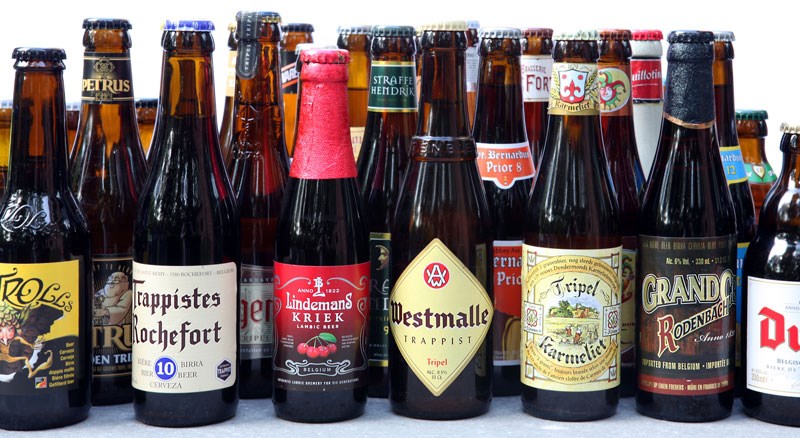The days of massive hop-bombed beers seem to be giving way to more experimental brewing styles in the craft beer scene. One of the major trends right now is melding the fruity funk of dank hops with the fruity funk of wild yeast strains.
Yes, there are funky hops and funky yeasts, and together they make some funky beers. The best way of describing funk is as “something out of the ordinary,” but many describe the smell and taste of these beers as horse sweat, Band-Aid and barnyard.
Sounds appetizing, right? No? We didn't think so either, but trust us: Give these wild beers a sip and they’ll win you over.
FUNKY HOPS
Hops aren’t always bitter. They can actually bring a wide array of flavours to the beer, depending on timing and quantities. Mosaic hops produce qualities of passionfruit and mango when used in moderate amounts, but when they cross a certain threshold, depending on the timing and amount — BOOM! Gym socks and B.O. become their primary traits.
Polaris hops can have a similar funk potential. Sirachi Ace hops tend to have a lime zest and peppery flavour when used in smaller quantities, but will taste like herbs or buttery dill if too many are used or if they’re from a bad crop.
FUNKY YEAST
Regular brewer's yeast is from the Saccharomyces yeast family ("Sac" for short), which consists of hundreds of strains that have been cultivated to do exactly what brewers want. These strains add predictable traits to the beer and can do anything, from adding fruity flavours to drying out the finish. For example, Wyeast 3711 is a standard French Saison yeast that dries out the saison without being too heavy on the yeast aftertaste, and tastes quite different from its Belgian counterparts.
Brettanomyces (Brett for short) is from another genus within the Sac family, and can be used to brew beer, but produces a funky taste and is much more unpredictable to brew with.
Brett is one of the most prevalent yeasts in the natural environment, and is something brewers try to avoid contaminating their batches with, unless they introduce it on purpose. Brett will run wild and take over a beer's flavour. This flavour domination is because Brett can eat more complex sugars in the fermentation process than Sac. This ability to eat a wider array of sugars allows Brett to dank up the beer with its unique flavour, and can take months instead of days to finish fermenting.
Sac and Brett can work together and can be added at different stages of the brew to help tame the funkiness of the Brett.
There are also different types of Brett, and some are funkier than others. Brett C generally produces a dank, pineapple flavour. Brett B creates that horse-sweat flavour, and Brett L (Lambicus) can produce that horse-sweat flavour, but sometimes just a general earthiness or funk.
Five dank beers to check out:
Buzzkill (Brassneck Brewery)
Operis Brett Saison (Four Winds Brewery)
Uncomfortable Silence (Dageraad Brewing/Brassneck Brewery)
Master Blaster North American Brett Saison(ishhh) (Swans Brewpub)
Greybeard (Strange Fellows Brewing)
The Winter 2016 edition of The Growler is out now at your favourite craft brewery, liquor store, or tap room, as well as on newsstands pretty much everywhere.



